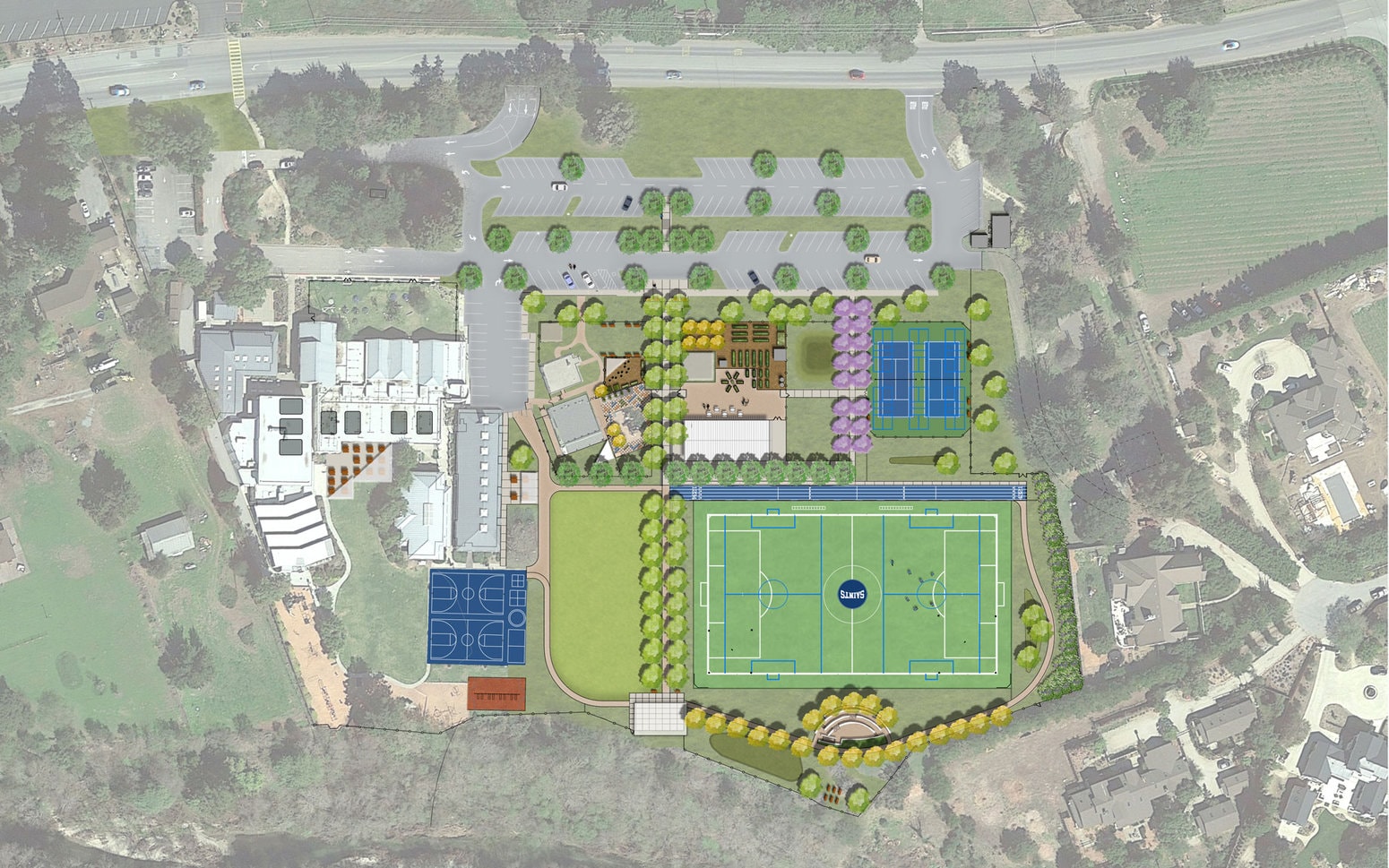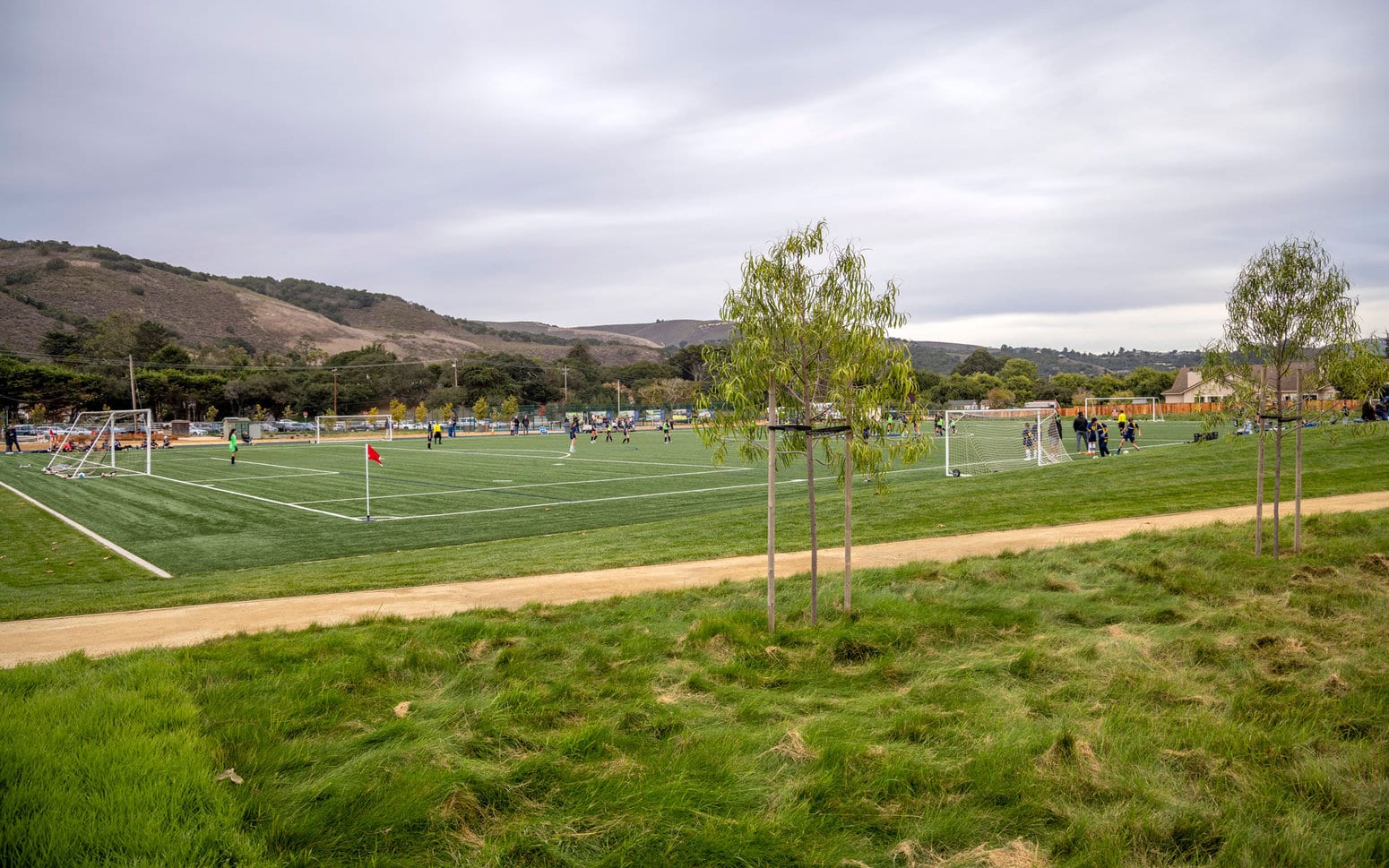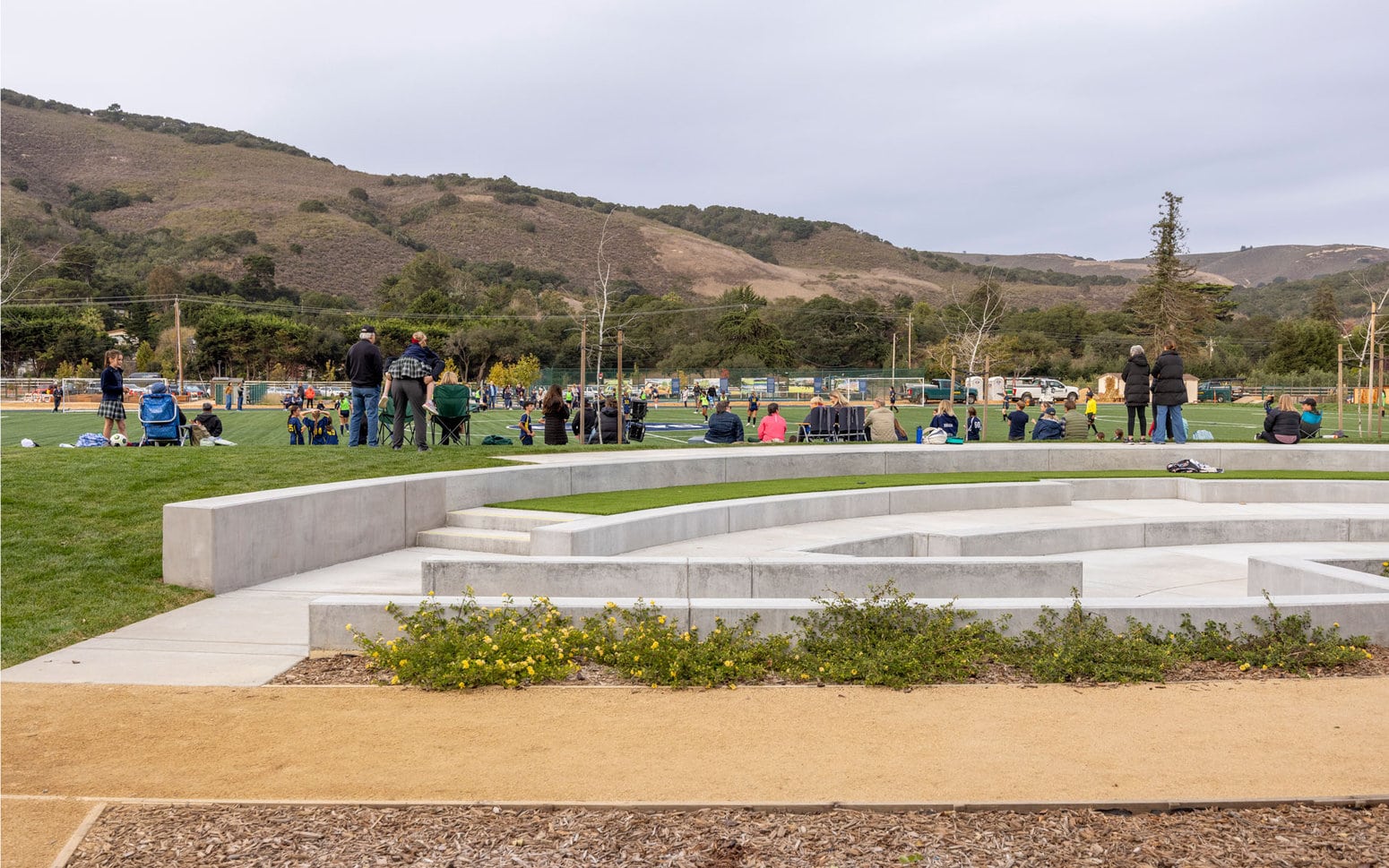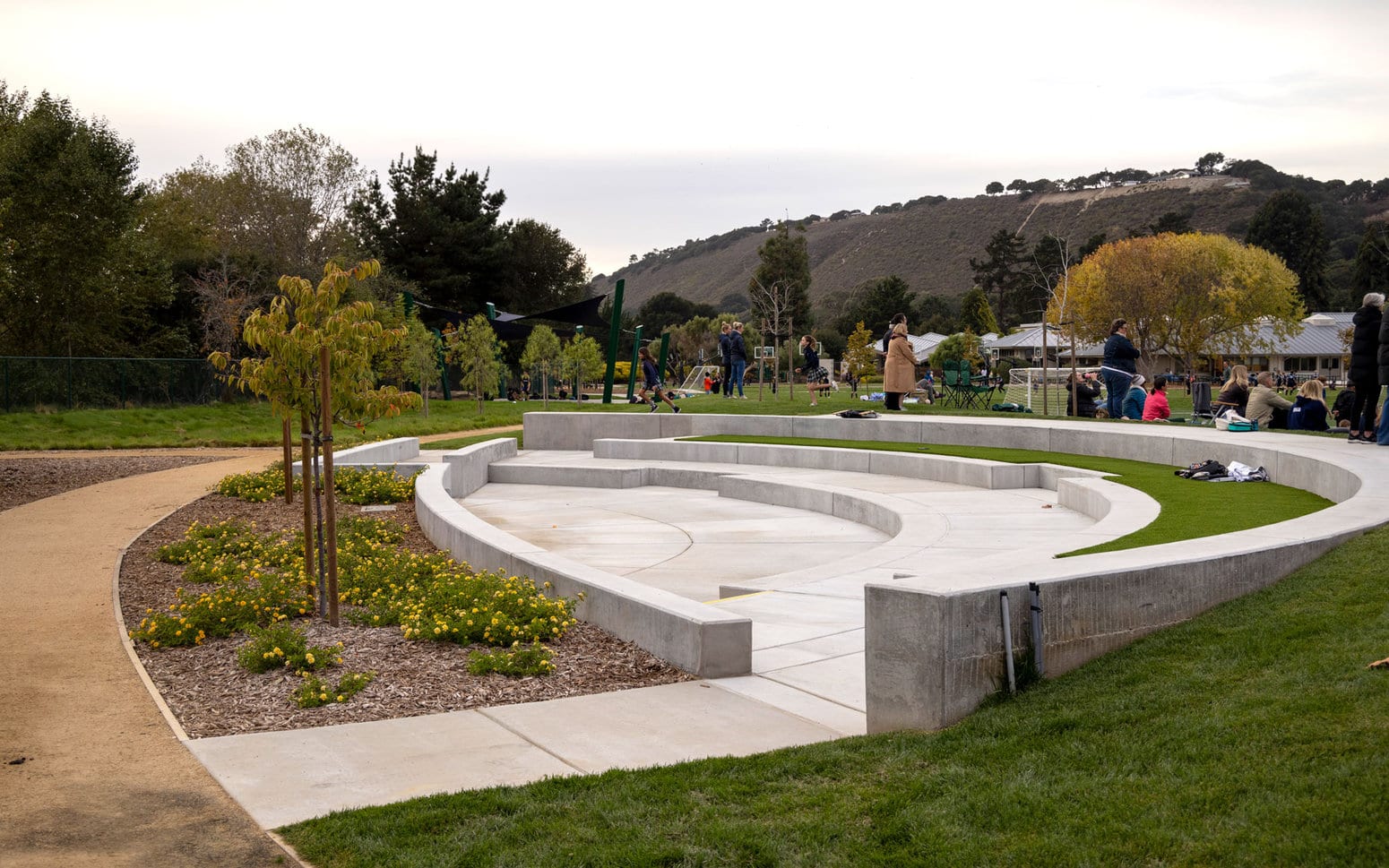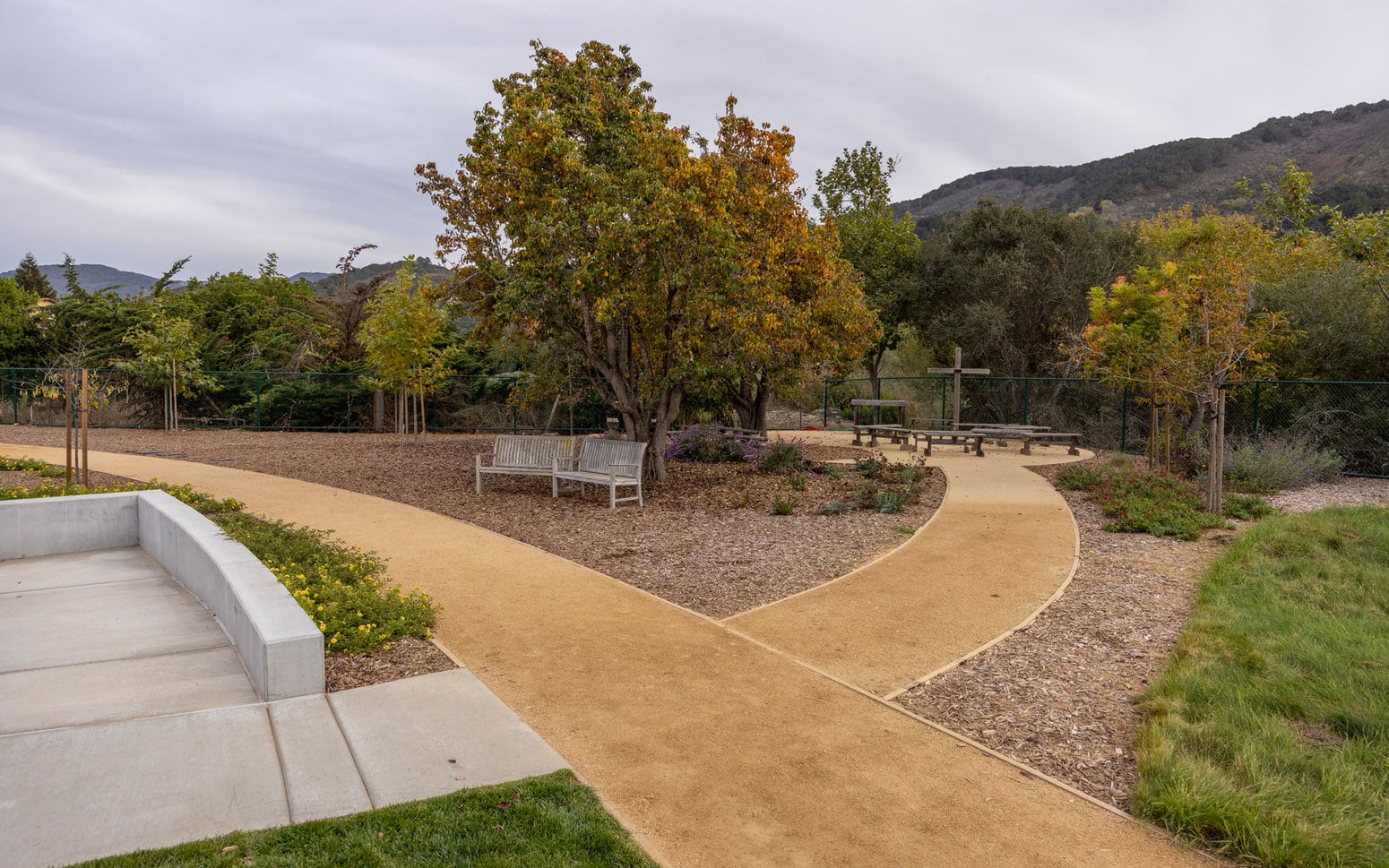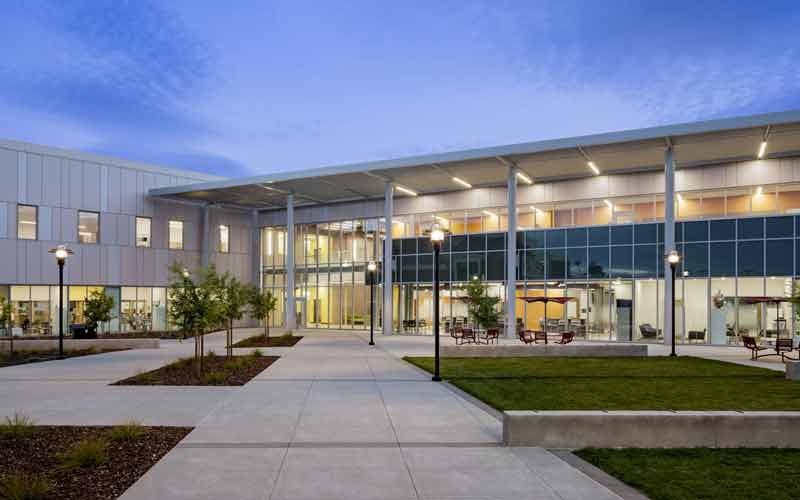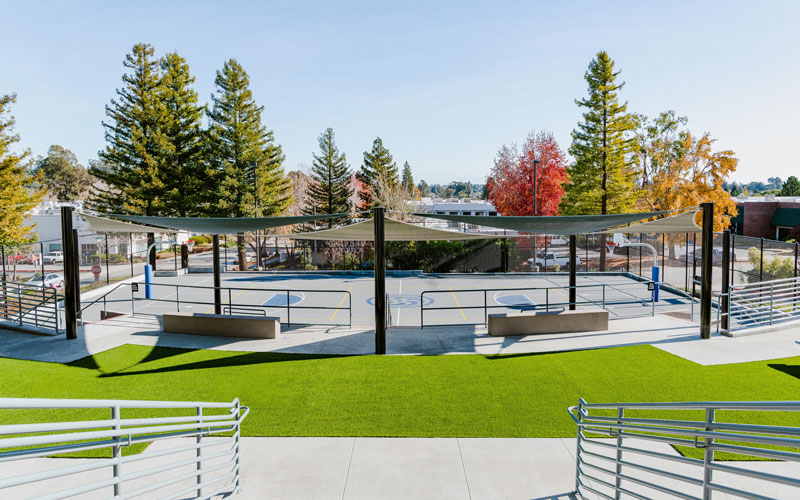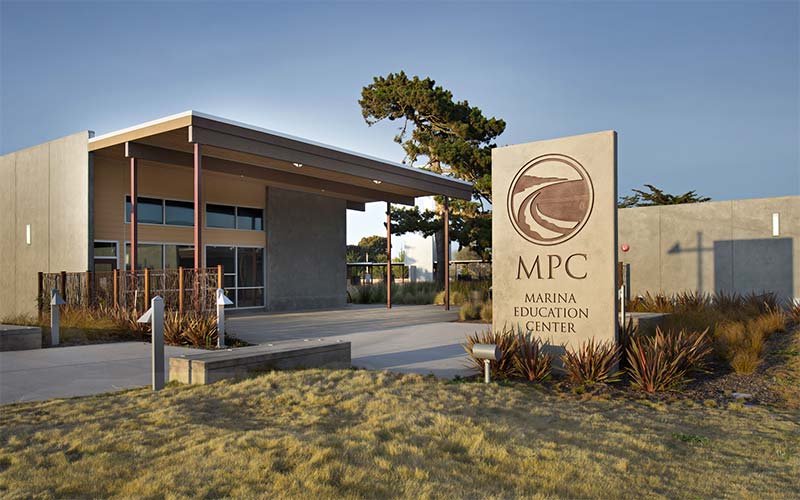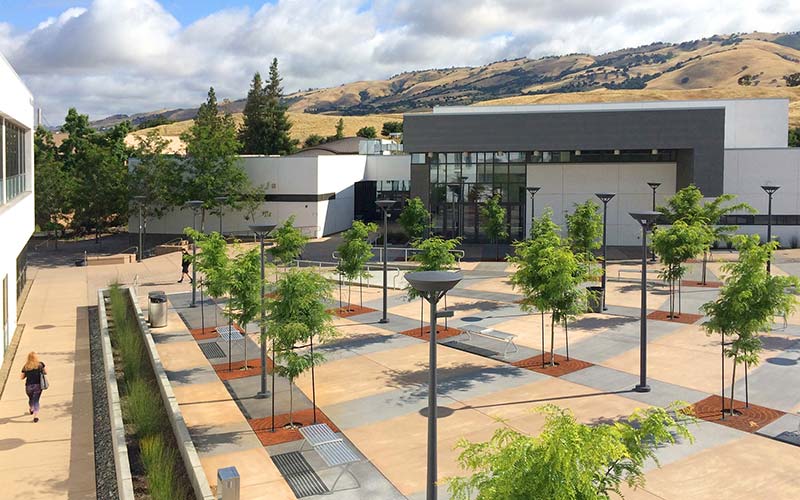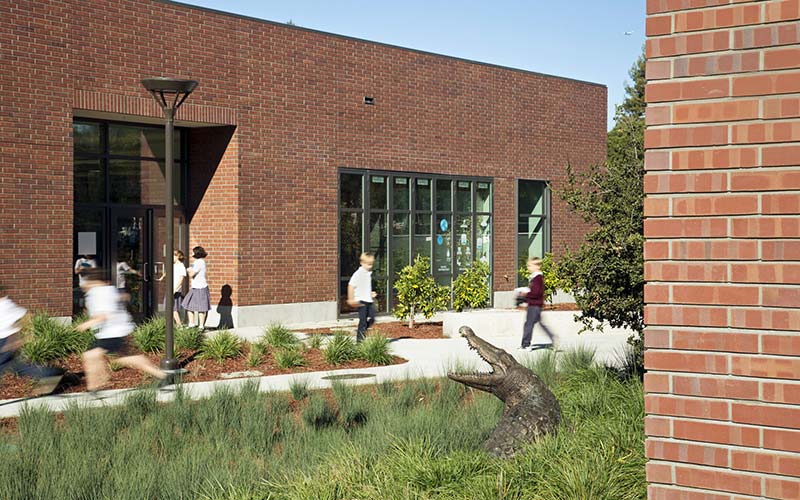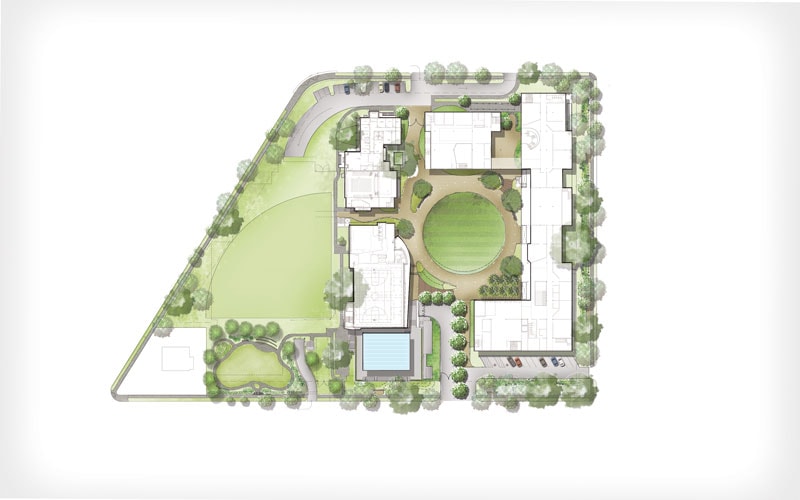All Saints Day School elevated their athletic and education curriculum with a campus expansion that began in 2020. The project converts eight acres of previously underdeveloped land into a new soccer/athletic field, short straight-away running track, tennis courts, amphitheater, and planting areas. The new synthetic turf field and track converts a previous large natural grass play lawn and removes the existing irrigation and water use.
The field was installed with the latest turf and natural infills to help maintain a cooler playing surface. The field is also striped for a larger high school level soccer field with two smaller U8 soccer fields to allow for competitive play beyond the traditional P.E. use.
